1,4-Bis(3-aminopropyl)piperazine
- CAS NO.:7209-38-3
- Empirical Formula: C10H24N4
- Molecular Weight: 200.32
- MDL number: MFCD00006161
- EINECS: 230-589-1
- SAFETY DATA SHEET (SDS)
- Update Date: 2025-09-25 17:15:13

What is 1,4-Bis(3-aminopropyl)piperazine?
Chemical properties
colorless to yellow liquid
The Uses of 1,4-Bis(3-aminopropyl)piperazine
1,4-Bis(3-aminopropyl)piperazine was used to functionalize natural montmorillonite (M) and synthetic kanemite (K)1.
What are the applications of Application
1,4-Bis(3-aminopropyl)piperazine is used to functionalize synthetic kanemite (K) and natural montmorillonite (M)
General Description
The thermodynamic parameters for protonation of 1,4-bis(3-aminopropyl)-piperazine (BAPP) were studied in aqueous solution using a potentiometric technique.
Safety Profile
Poison by intravenous route. Acorrosive material and a powerful irritant to skin, eyes, andmucous membranes. When heated to decomposition itemits toxic fumes of NOx.
Properties of 1,4-Bis(3-aminopropyl)piperazine
| Melting point: | 15 °C(lit.) |
| Boiling point: | 150-152 °C2 mm Hg(lit.) |
| Density | 0.973 g/mL at 25 °C(lit.) |
| vapor density | 6.9 (vs air) |
| vapor pressure | 0.133Pa at 25℃ |
| refractive index | n |
| Flash point: | 325 °F |
| form | clear liquid |
| pka | 10.69±0.10(Predicted) |
| color | Colorless to Almost colorless |
| PH | 11.7 at 20℃ and 1mg/L |
| Water Solubility | Fully miscible in water. |
| Sensitive | Air Sensitive |
| BRN | 111747 |
| CAS DataBase Reference | 7209-38-3(CAS DataBase Reference) |
| NIST Chemistry Reference | 1,4-Bis(3-aminopropyl)piperazine(7209-38-3) |
| EPA Substance Registry System | 1,4-Piperazinedipropanamine (7209-38-3) |
Safety information for 1,4-Bis(3-aminopropyl)piperazine
| Signal word | Danger |
| Pictogram(s) |
 Corrosion Corrosives GHS05 |
| GHS Hazard Statements |
H314:Skin corrosion/irritation |
| Precautionary Statement Codes |
P280:Wear protective gloves/protective clothing/eye protection/face protection. P363:Wash contaminated clothing before reuse. P303+P361+P353:IF ON SKIN (or hair): Remove/Take off Immediately all contaminated clothing. Rinse SKIN with water/shower. P305+P351+P338:IF IN EYES: Rinse cautiously with water for several minutes. Remove contact lenses, if present and easy to do. Continuerinsing. P405:Store locked up. |
Computed Descriptors for 1,4-Bis(3-aminopropyl)piperazine
New Products
Indole Methyl Resin tert-butyl 9-methoxy-3-azaspiro[5.5]undecane-3-carboxylate Boc-His(Boc)-OH 2-CTC Resin 4-Chloro-7-tosy1-7Hpyrrolo[2,3-d]pyrimidine 5,7-Dibromo-1H-indole 2,5-dichloro-N-hydroxy-4,6-dimethylpyridine-3-carboximidamide 2,2-Dimethoxy-7-azaspiro[3.5]nonane hydrochloride 4-chloromethyl-5-methyl-1,3-dioxol-2-one (DMDO-Cl) R-2-BENZYLOXY PROPIONIC ACID 1,1’-CARBONYLDIIMIDAZOLE 1,1’-CARBONYLDI (1,2-4 TRIAZOLE) N-METHYL INDAZOLE-3-CARBOXYLIC ACID 4-((2-hydroxyethyl)thio)benzoic acid 1-(TERT-BUTOXYCARBONYL)-2-PYRROLIDINONE Methyl 6-methylnicotinate 3-Pyridineacrylic acid tert-Butyl carbazate TETRAHYDRO-2H-PYRAN-3-OL 2-((4-morpholinophenylamino) (methylthio) methylene) malononitrile 3-(4-morpholinophenylamino)-5-amino-1H-pyrazole-4-carbonitrile 2,4-dihydroxybenzaldehyde 1,3-Diethyl-1,3-Diphenylurea Methyl 2-methylquinoline-6-carboxylateRelated products of tetrahydrofuran
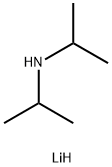
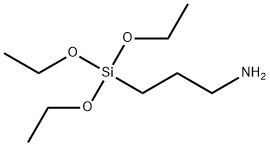

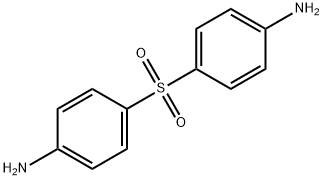
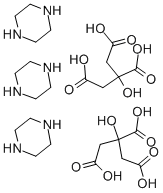


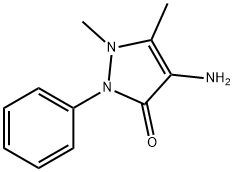
You may like
-
 1,4-Bis(3-aminopropyl)piperazine 98%View Details
1,4-Bis(3-aminopropyl)piperazine 98%View Details -
 1,4-Bis(3-aminopropyl)piperazine CAS 7209-38-3View Details
1,4-Bis(3-aminopropyl)piperazine CAS 7209-38-3View Details
7209-38-3 -
 1,4-Bis(3-aminopropyl)piperazine CAS 7209-38-3View Details
1,4-Bis(3-aminopropyl)piperazine CAS 7209-38-3View Details
7209-38-3 -
 1,4-Bis(3-aminopropyl)piperazine CAS 7209-38-3View Details
1,4-Bis(3-aminopropyl)piperazine CAS 7209-38-3View Details
7209-38-3 -
 Pyridine 99.5% HPLC /UV SpectroscopyView Details
Pyridine 99.5% HPLC /UV SpectroscopyView Details
110-86-1 -
 Dibutyl PhthalateView Details
Dibutyl PhthalateView Details
84-74-2 -
 Imidazole Spot supply, competitive priceView Details
Imidazole Spot supply, competitive priceView Details
288-32-4 -
 Thiourea 99% ARView Details
Thiourea 99% ARView Details
62-56-6
Statement: All products displayed on this website are only used for non medical purposes such as industrial applications or scientific research, and cannot be used for clinical diagnosis or treatment of humans or animals. They are not medicinal or edible.
